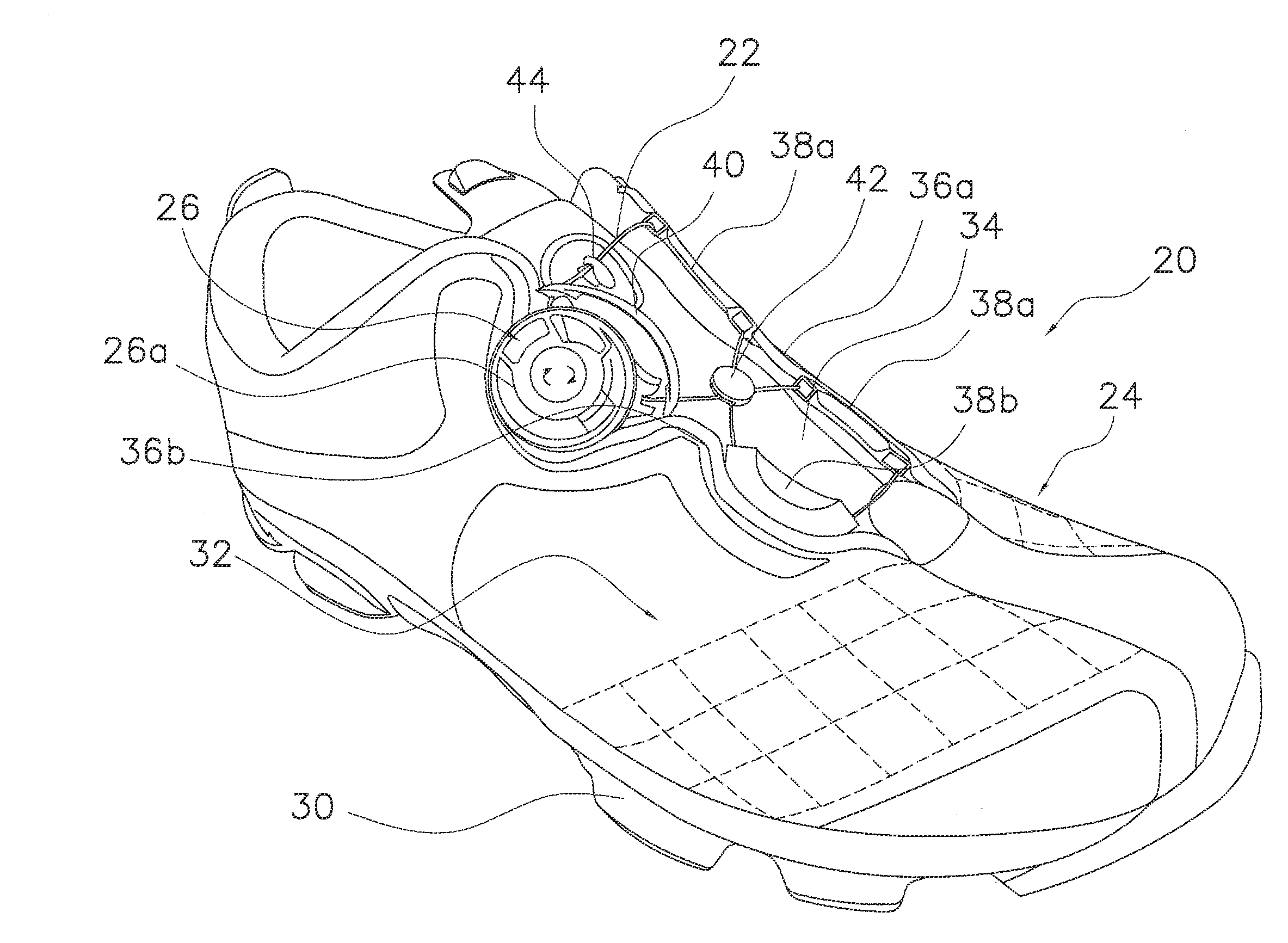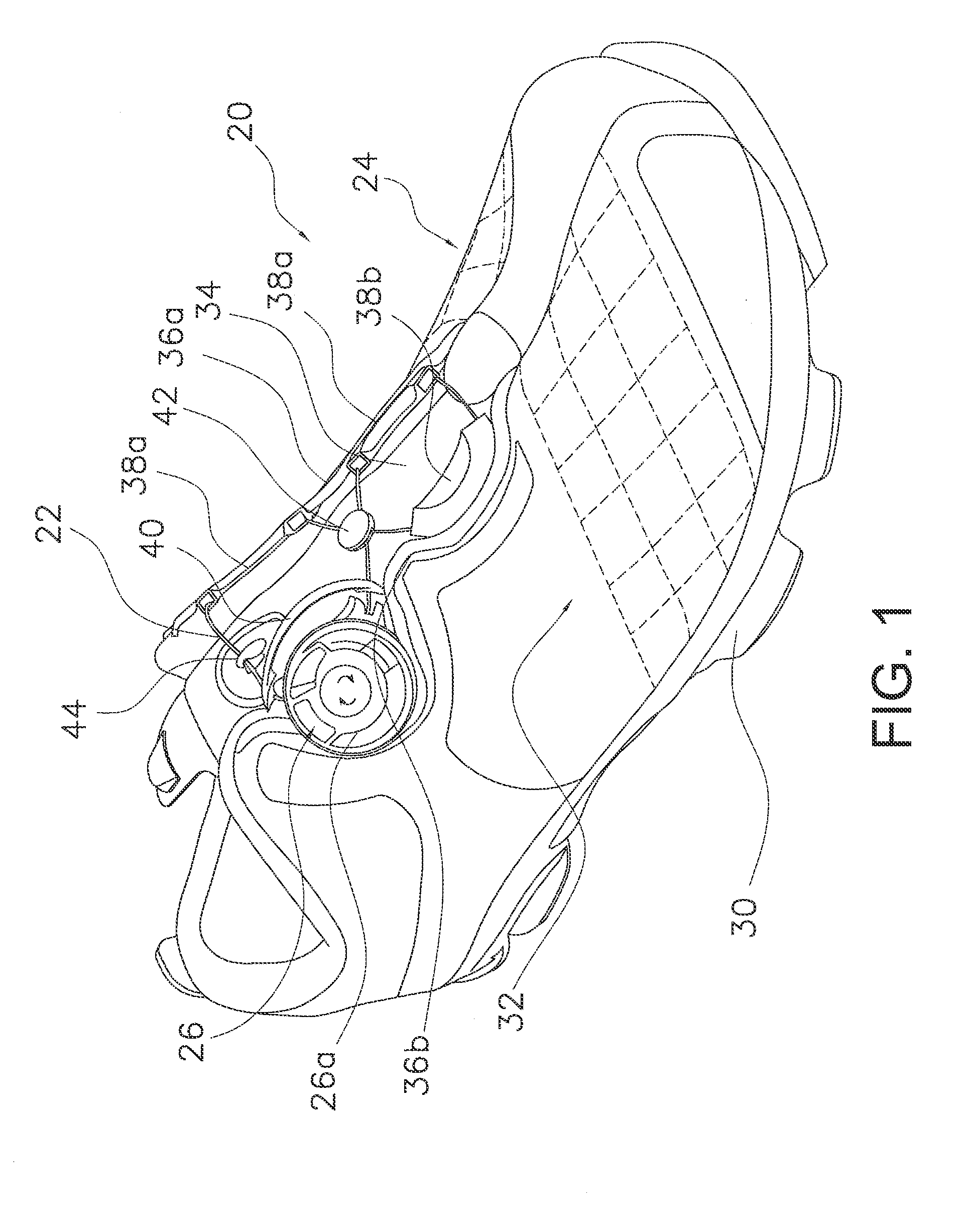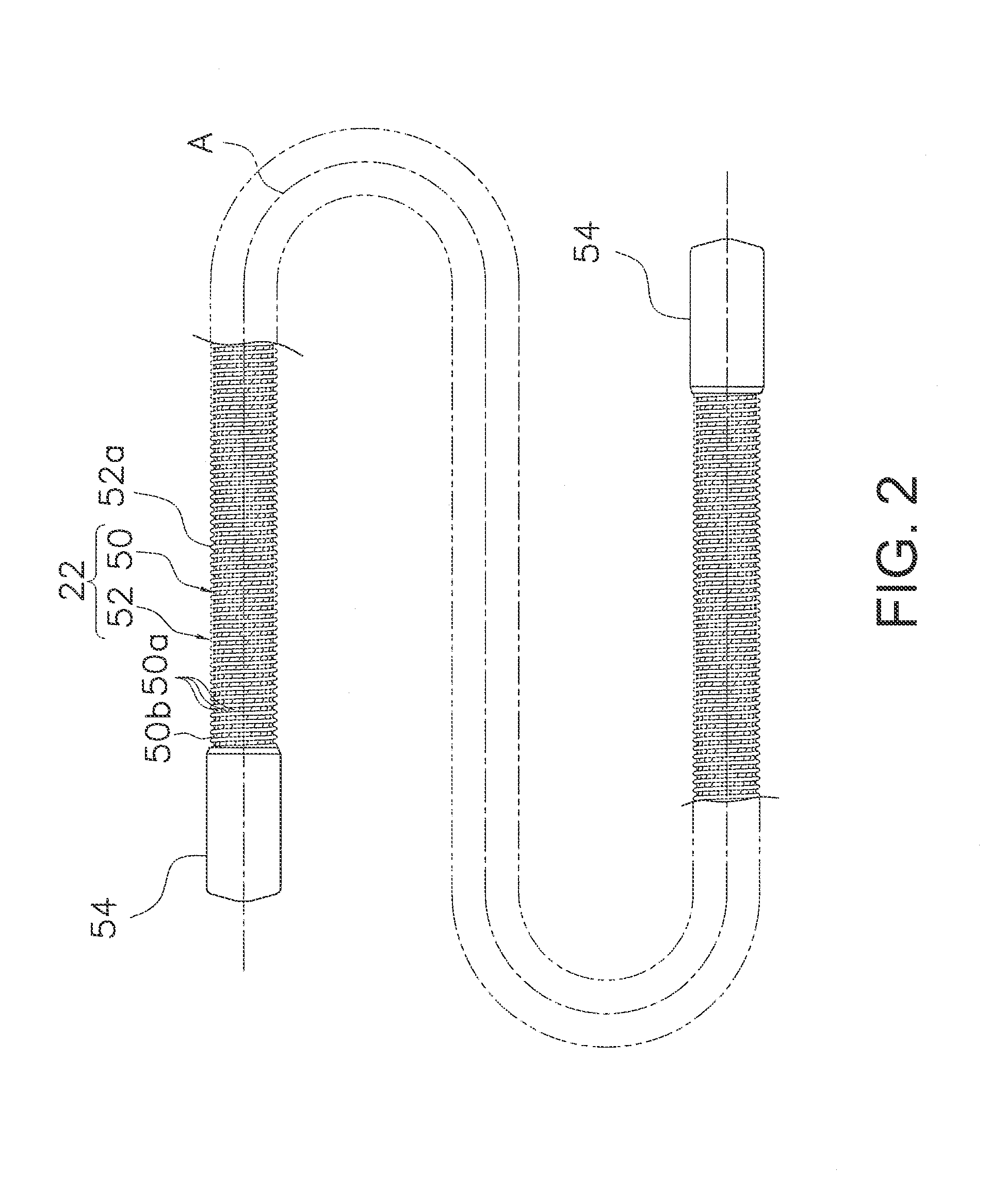Lacing cord and shoes using the same
a technology of laced cords and shoes, applied in the direction of fastenings, travelling articles, travelling sacks, etc., can solve the problems of substantial force and necessary rotational force, and achieve the effect of reducing the force for tightening the shoe body, loosening the tightness of the shoe, and easy removal of the sho
- Summary
- Abstract
- Description
- Claims
- Application Information
AI Technical Summary
Benefits of technology
Problems solved by technology
Method used
Image
Examples
second embodiment
[0048]In the second embodiment, as seen in FIG. 7, a lacing cord 122 is illustrated. Here, the lacing cord 122 has a core wire 150, a protruding part 152 and a primer layer 153. The core wire 150 of the lacing cord 122 has a peripheral section 150b that is covered with a primer layer 153 as illustrated in FIG. 7. The protruding part 152 is spirally wound on the core wire 150 via the primer layer 153. The primer layer 153 is provided to enhance the adhesion of the core wire 150 to the protruding part 152 and to strengthen the adhesion of the protruding part 152.
Other Embodiments
[0049]Embodiments of the present invention were described above. However, the present invention is not limited to these embodiments, and various changes are possible in a scope of not deviating from the essence of the invention. In particular, the embodiments and modified examples described in the specification can be optionally combined according to the need to do so.
[0050](a) In the embodiments described abo...
PUM
 Login to View More
Login to View More Abstract
Description
Claims
Application Information
 Login to View More
Login to View More - R&D
- Intellectual Property
- Life Sciences
- Materials
- Tech Scout
- Unparalleled Data Quality
- Higher Quality Content
- 60% Fewer Hallucinations
Browse by: Latest US Patents, China's latest patents, Technical Efficacy Thesaurus, Application Domain, Technology Topic, Popular Technical Reports.
© 2025 PatSnap. All rights reserved.Legal|Privacy policy|Modern Slavery Act Transparency Statement|Sitemap|About US| Contact US: help@patsnap.com



